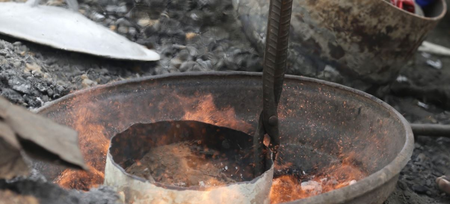
New Delhi — The World Health Organization (WHO) has called for immediate and coordinated global action to eliminate lead exposure, warning that the preventable toxin continues to pose a grave threat to millions of people, especially children, around the world.
Despite being entirely avoidable, lead poisoning remains one of the most serious environmental health risks, with lead found in everyday materials such as paint, batteries, cosmetics, spices, and even contaminated air, water, and soil.
According to WHO, lead exposure causes nearly 1.5 million deaths every year, primarily due to cardiovascular diseases, and inflicts irreversible neurological and behavioural damage — particularly in children. Young children absorb far more lead than adults, leading to lower IQ, learning disabilities, and behavioural issues, while exposure during pregnancy harms the developing foetus.
“There is no safe level of lead. Every child deserves a future free from this poison,” said Dr Ruediger Krech, Director of the WHO’s Department of Environment, Climate Change, One Health and Migration (a.i).
“We call on governments, communities, and health-care providers to act decisively to eliminate lead exposure and protect the next generation,” he added.
The WHO issued the call ahead of the 13th International Lead Poisoning Prevention Week (ILPPW), scheduled from October 19 to 25.
While global efforts — such as the ban on leaded petrol and restrictions on lead-based paints — have reduced some risks, the WHO stressed that voluntary measures are insufficient. It urged comprehensive bans on the manufacture, import, sale, and use of lead-based paints, coupled with strict enforcement, particularly to safeguard children.
Beyond health impacts, lead exposure poses a massive economic burden. A new global study by researchers from Jadavpur University (Kolkata) and the National University of Singapore (NUS), published in Communications Earth & Environment, estimated that ongoing childhood lead exposure results in over $3.4 trillion in lost economic potential annually.
The study warns that without stronger global safeguards, the rising demand for electrification and the unregulated recycling of lead-based materials could deepen inequalities and undermine decades of progress in children’s health.
WHO concluded that the elimination of lead exposure is not just a public health priority, but an economic and moral imperative to protect the well-being and potential of future generations.
With inputs from IANS